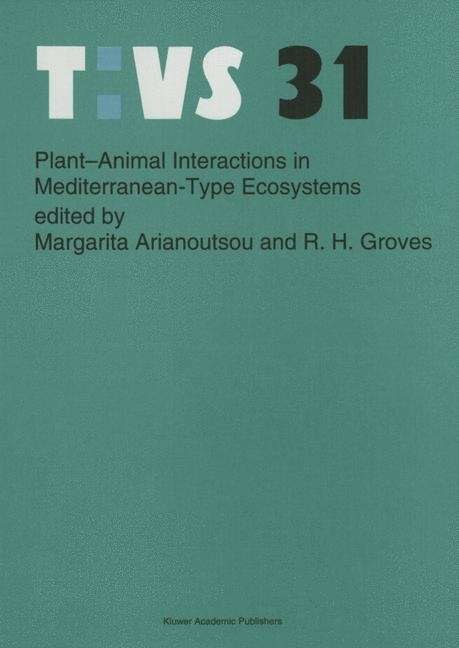
Plant-Animal Interactions in Mediterranean-Type Ecosystems
Kluwer Academic Publishers (Verlag)
978-0-7923-2470-6 (ISBN)
This volume comprises invited contributions on aspects of plant-animal interactions in Mediterranean-type ecosystems, which was the subject of the Sixth International Conference on Mediterranean Climate Ecosystems held in Crete, Greece, from September 23 - 27, 1991. The subject of plant-animal interactions is fundamental to the Mediterranean-type ecosystems and their rational management. All five regions of the world with a Mediterranean climate are represented: the Mediterranean basin, California, Chile, South Africa and Australia. The book is divided into six parts, which reflect trends in the research of the members of the International Society of Mediterranean Ecology (ISOMED).
Aristotle and Theophrastus on plant-animal interactions, C.A. Thanos. Part 1 Community Structure: Species-richness of vascular plants and vertebrates in relation to canopy productivity, R.L. Specht. Summergreenness, evergreenness and life history variation in Mediterranean blue tits, J. Blondel, P.C. Dias. Community structure and species richness in the Mediterranean-type soil fauna, A. Legakis. Bird diversity within and among Australian heathlands, M.L. Cody. Plant community structure in southwestern Australia and aspects of herbivory, seed dispersal and pollination, D.T. Bell. Triangular Relationships. Resource webs in Mediterranean-type climates, H.A. Mooney, R.J. Hobbs. Triangular trophic relationships in Mediterranean-climate Western Australia, B.B. Lamont. Part 2 Herbivory: Has intensive grazing by domestic livestock degraded Mediterranean Basin rangelands?, N.G. Seligman, A. Perevolotsky. Resource availability and herbivory in Larrea tridentat, P.W. Rundel, M.R. Sharifi, A. Gonzalez-Coloma. Effects of insect herbivory on plant architecture, R. Ginocchio, G. Montenegro. Part 3 Pollination: Pollination syndromes in the Mediterranean - generalizations and peculiarities, A. Dafni, C. O'Toole. Red flowers and butterfly pollination in the Cape fynbos, S.D. Johnson, W.J. Bond. Part 4 Seed Dispersal: Modes of dispersal of seeds in the Cape fynbos, E.J. Moll, B. McKenzie. Why are there so many myrmecochorous species in the Cape fynbos?, R.M. Cowling, S.M. Pierce, W.D. Stock, M. Cocks.
| Erscheint lt. Verlag | 28.2.1994 |
|---|---|
| Reihe/Serie | Tasks for Vegetation Science ; v. 31 |
| Zusatzinfo | indexes |
| Sprache | englisch |
| Einbandart | gebunden |
| Themenwelt | Naturwissenschaften ► Biologie ► Ökologie / Naturschutz |
| ISBN-10 | 0-7923-2470-6 / 0792324706 |
| ISBN-13 | 978-0-7923-2470-6 / 9780792324706 |
| Zustand | Neuware |
| Haben Sie eine Frage zum Produkt? |
aus dem Bereich


